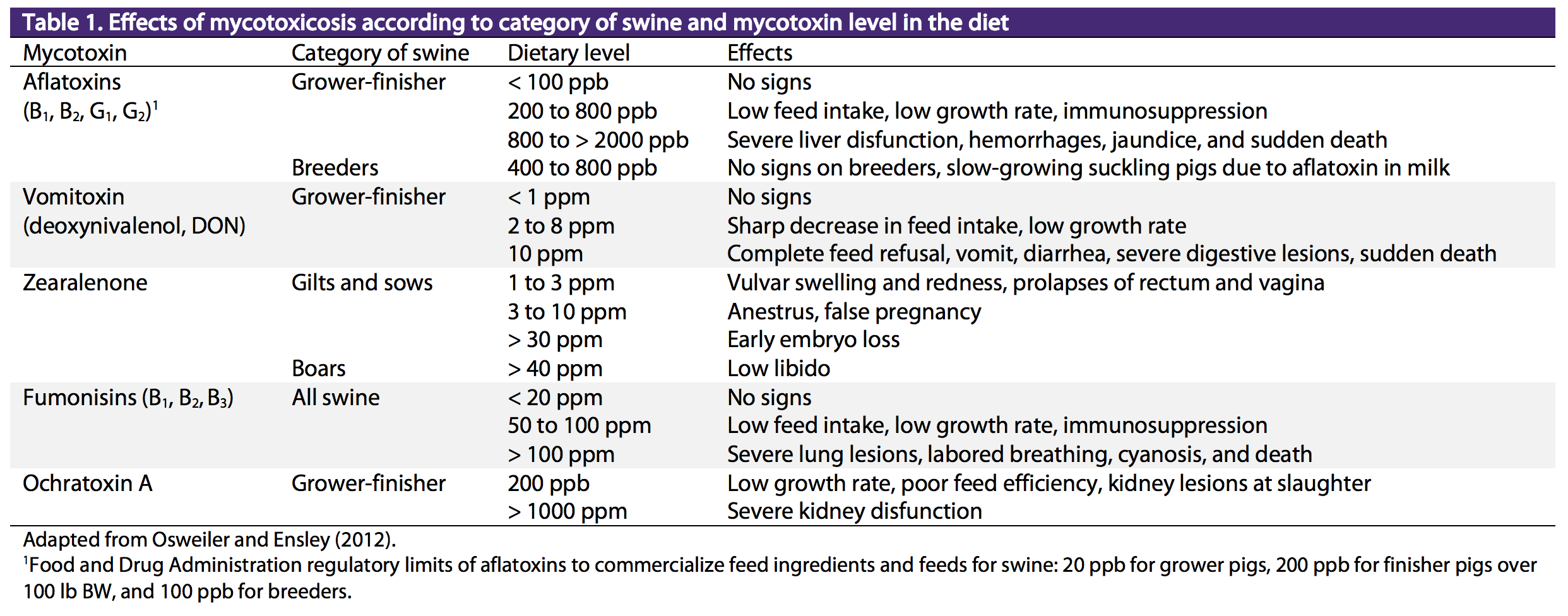Types of mycotoxins
Swine are particularly susceptible to mycotoxicosis. Mycotoxicosis is the intoxication that results from the consumption of grains or feeds contaminated with mycotoxins. The degree of mycotoxicosis depends on mycotoxin type and concentration present in the feed and the category of swine consuming the diet. Table 1 presents the effects of mycotoxicosis in each category of swine according to mycotoxin concentration in the feed. In addition, the Food and Drug Administration determines regulatory limits of aflatoxins to commercialize feed ingredients and feeds for swine to 20 ppb for grower pigs, 200 ppb for finisher pigs over 100 lb BW, and 100 ppb for breeders.
Mycotoxicosis affects many body systems with a wide variety of signs, lesions, and impaired performance. Typically, young pigs and sows are more susceptible and the effects of mycotoxicosis are more evident (Osweiler and Ensley, 2012). Moreover, contamination with more than one mycotoxin is frequent and the combination of mycotoxins often have additive effects (Vila-Donat et al., 2018). However, while there is data available on the effects of a single mycotoxin contamination on swine performance, little is known about the effects of multiple mycotoxin contamination.

